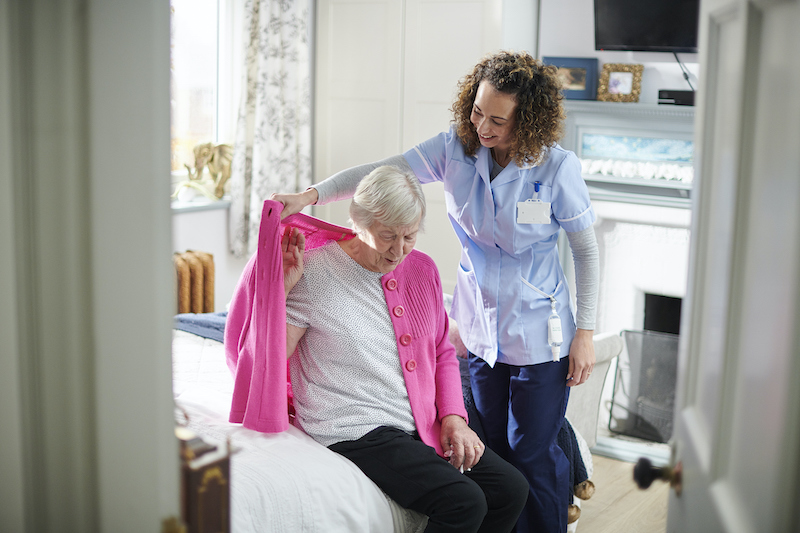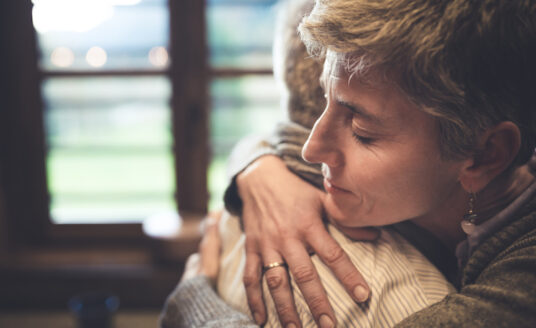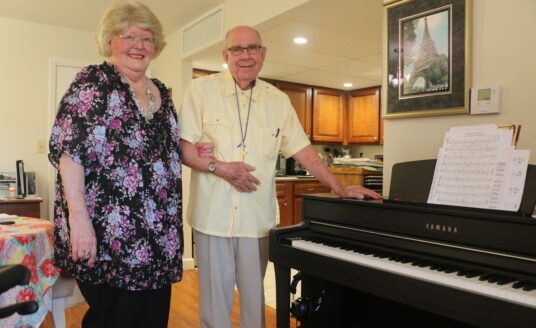There are two categories of daily activities that can serve as a gauge to a senior’s physical and cognitive health: Activities of Daily Living (ADLs) and Instrumental Activities of Daily Living (IADLs).
Both ADLs and IADLs provide insight into the functional capabilities of the senior. Monitoring each can also reveal illness, injury or cognitive challenges that may be creating a senior’s reduced capacity to live independently and help determine what specific support is needed.
What are activities of daily living (ADLs)?
The Katz Index of Independence in Activities of Daily Living includes six basic skills:
- Hygiene: the ability to bathe oneself and maintain dental, hair, and nail hygiene.
- Continence: having complete control of bowels and bladder.
- Dressing: the ability to select appropriate clothes and outerwear and to dress independently.
- Mobility: being able to walk or transfer from one place to another, specifically in and out of a bed or chair.
- Feeding: the ability to get food from plate to mouth, and to chew and swallow.
- Toileting: the ability to get on and off the toilet and clean oneself without assistance.
These everyday tasks can become a challenge both physically and cognitively for seniors. Recognizing a decline in your senior’s ability to perform these ADLs and sharing this information with the senior’s physician will assist in determining how much supervision, therapy and support the senior needs now and in the future.
Family caregivers and/or home health professionals may suffice initially, but constant monitoring of the senior’s abilities needs to take place. Also, attention needs to be paid if a senior expresses difficulty with some of these activities.
If the senior is living with dementia, a loss of ADL skills may come later in the progression of the disease, as these activities have been a basic and daily part of the senior’s life for an extended period of time. A loss of IADL skills, however, will be easier to recognize due to their added complexity.
What are instrumental activities of daily living (IADLs)?
These activities involve thinking and organizational skills, and may be the first sign of decline in seniors with cognitive impairment. IADLs are outlined on the Lawton-Brody scale. They include:
- Cleaning and housekeeping
- Managing money
- Managing medications
- Preparing meals
- Shopping
- Transportation
- Communicating by phone or email
Signs that Abilities May be Diminishing
- Diminished driving skills: Has there been an increased number of fender benders, misjudgments of speed and distances and near misses?
- Finances in disarray: Are there unpaid bills, unusual expenditures and calls from bill collectors?
- An increased number of accidents: Has there been an increased number of falls, unexplained bruising, burns or more trips to the emergency room?
- Cognitive challenges are becoming more apparent: Memory loss, getting lost in what should be familiar surroundings and using poor judgment are indicative of a significant decline.
- Loss of interest: Has the senior stopped enjoying a long-pursued hobby, lost interest in other activities he or she used to enjoy and began to withdraw from family and friends?
- Altered eating habits: Have these new eating habits resulted in significant weight gain or weight loss?
Ask other family and friends about their observations of the senior, and be aware that the senior’s ability or inability to perform a task may depend upon their level of fatigue, medications, or desire in completing the task at a particular moment. Also, you may notice that the senior may complete the activity at a slower pace than you would expect. Be objective and patient in your observations. Guard against any preconceived notions about your senior’s abilities that could prematurely sway your judgment.
In some cases, the addition of hearing or visual aids, or physical therapy may restore all or part of the skills that are missing. Assistive devices for bathing, toileting, or improving mobility can enable the senior to regain some independence.
Home health care may become the best alternative for helping the senior with daily activities. If one or two daily living activities are a challenge, independent living in a senior retirement community could be appropriate or, if there are additional challenges, assisted living may be a good fit.
Why Assessment is Important
A change in ADLs or IADLs can signal the need for a medical evaluation or changes in medications for your senior. With notes on the skills that have been lost or diminished, a physician can prescribe medical treatment and suggest therapy or assistive devices to help the senior gain some improvement in function.
The information that family caregivers provide is vital in forming this care plan.
Whether your senior loved one is aging in place or living at a retirement community, there may come a time when additional assistance is needed. Learn more about Bethesda’s Home Health, Care Management and Senior Support Solutions programs.
Contact us to learn how these programs can help your loved one with daily tasks, or plan for the time when more support is needed.
| Whether you choose independent living, assisted living, memory care, or skilled nursing, your experience at Bethesda will be filled with compassionate care and meaningful connections. If you are considering assisted living, we encourage you to tour our communities, including Bethesda Hawthorne Place and Assisted Living at Charless Village. If you have any questions about our non-profit senior living communities, contact us today. |
Want to find out more?
If you’d like to stay up to date with Bethesda Health Group, sign up here to receive our blog and newsletters!
"*" indicates required fields
Related Articles
Want to find out more?
If you’d like to stay up to date with Bethesda Health Group, sign up here to receive our blog and newsletters!
"*" indicates required fields



